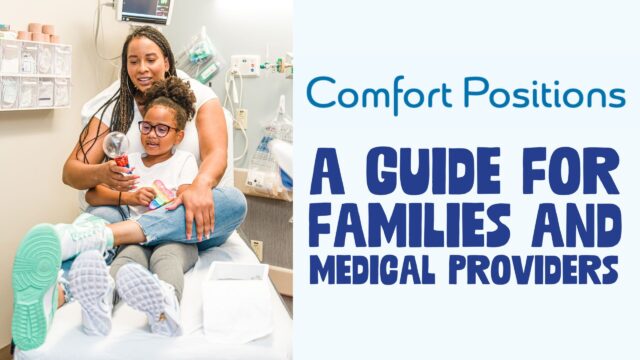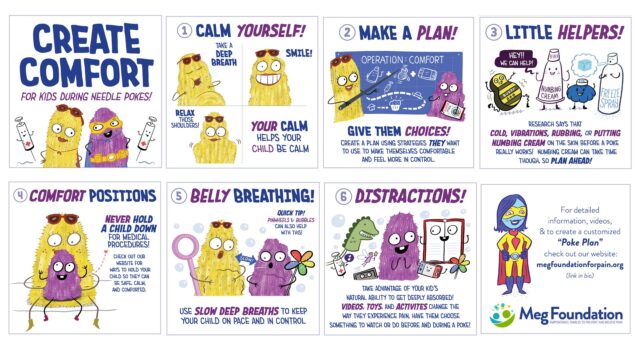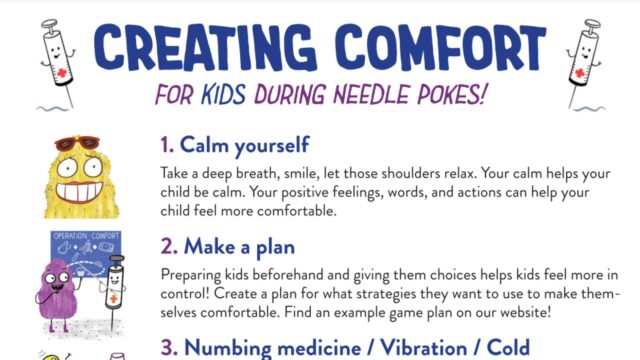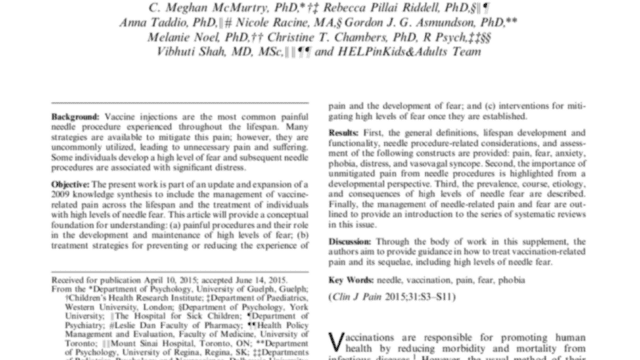Getting Ready For Kindergarten Vaccines
Why those shots don’t have to be a pain (literally or figuratively…)
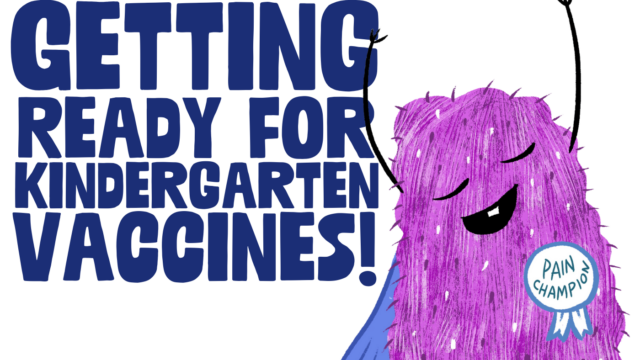
Jody Thomas, PhD
Share this:

For most parents, the thought of taking your kid to the doctor to get a shot is something you’d like to shove WAY down the to-do list and is preferable only to other fun activities like an unmedicated root canal or cleaning up a septic tank spill. But here’s the thing: it doesn’t have to be that way. In fact, simple, effective, research-backed strategies can make this a WHOLE lot easier for you and your little one both now and in the future. And no, this isn’t just social media clickbait…it’s science.
Vaccines are also not something you get the luxury of avoiding. Because they are so fundamental to kids’ health, all 50 states have vaccine requirements for schools, which means prior to starting kindergarten, millions of kids will be getting those all-important pokes. So let’s talk about how we can make it better for kids and for you.
Side note: Even if you’re not into vaccines, chances are REALLY good that at some point, your child is going to need some sort of needle procedure, whether that is a blood draw or a few stitches…and yes, these strategies work for all that too!
The stakes are high
This is a really important age for making needle pokes a good experience. Kindergarteners aren’t babies anymore; they are getting bigger, so holding them down (which is NEVER a good plan…more on that later…) is getting harder. They can also be, shall we say, very expressive in telling you exactly how they feel about it. It’s also a prime age for developing a fear of doctors and needle phobia if we don’t play our cards right.
Many people with needle anxiety can trace their first bad experience with pokes down to specific memories at this age. Research tells us that these bad experiences can both create avoidance of health care later in life and can influence parents’ health care decisions about their child now. That makes sense…a screaming, protesting child doesn’t exactly increase anyone’s desire to go back to the pediatrician. But the opposite is also true: a good experience can pave the way for a lifetime of more confidence and better health outcomes. Long story short: what happens now has a BIG impact on the future.
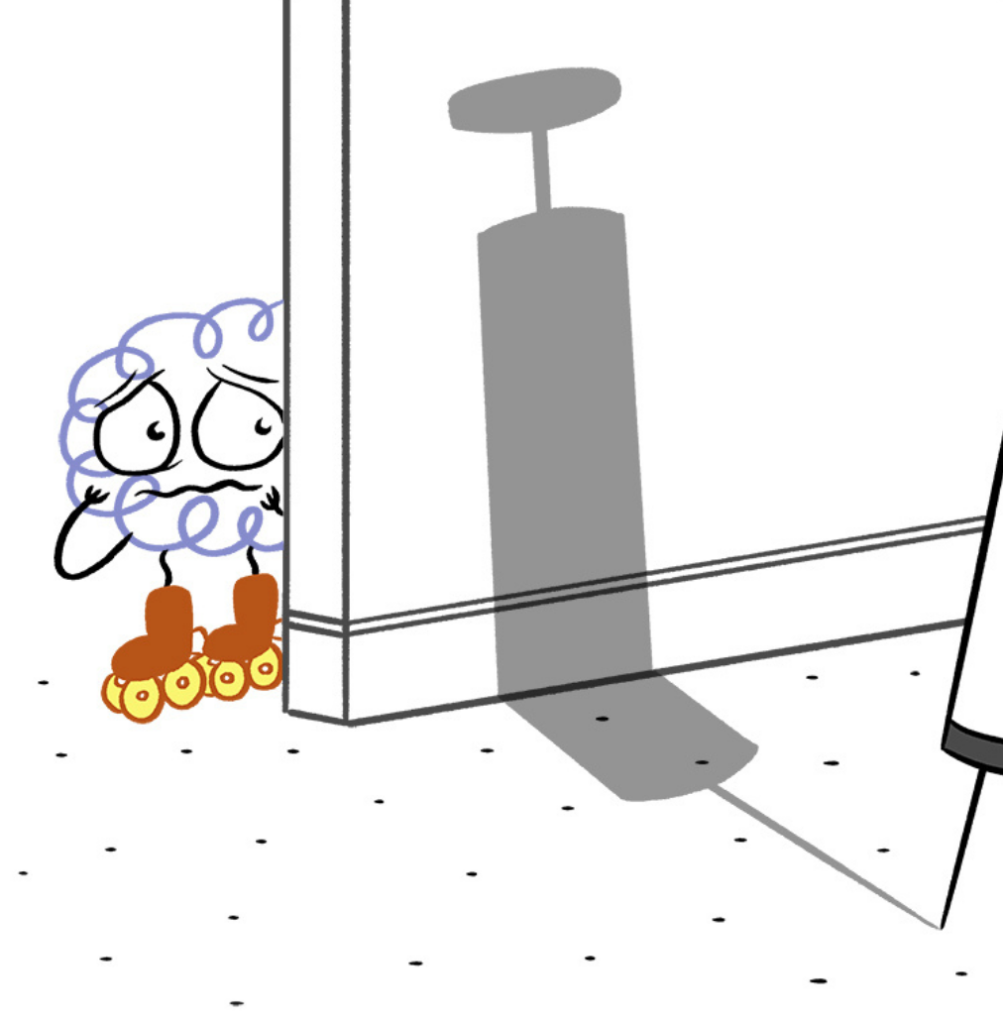
Kids this age love learning new things
Kindergarteners are known for their desire to “do it myself” and learn new things. And what is more fun than learning a new superpower? When we frame this experience correctly, it becomes an opportunity for mastering a new skill, feeling powerful and in control, and doing something even a lot of adults can have a hard time doing. What is more confidence-building for a kid than that? It helps that at this age they are capable of a conversation, can make a plan, and can remember their previous trips to the doctor.
Planning is key
Parents often decide not to tell kids they’ll need to get a shot until they are pulling into the pediatrician’s parking lot or lie when the kids asks if they are going to have to get a shot. Even though it is a well intentioned natural response, it is actually very unhelpful.
Usually, the goal of this avoidance is trying to shield their kiddo from anxiety beforehand, but in reality, this just means we don’t give kids the chance to figure out how to cope with that very natural anxiety and learn strategies to help them feel more comfortable and in control. I always ask parents to imagine what it would be like to have to present to their boss at the biggest work meeting of their lives, but no one tells you until 2 minutes before. Would that make you feel better or worse about going in? Would that increase or decrease your chance for success? Instead, a few days before your child is getting the poke, sit down and talk about what is going to happen.
(Also, check with the doc beforehand to see how many pokes your child will be getting. You don’t want to mistakenly promise one when they actually need two.)
Here is everything you need to know for talking to your kindergarteners about their vaccines:
1. Make a Plan with SuperMeg
Lucky for you – we have an interactive tech tool that is perfect for this age and is something you can use with your child. The SuperMeg Poke Planner guides your child through creating their own personalized comfort coping plan and sends the results to you, along with the resources to make that plan happen. We also have a downloadable planning worksheet if you’re looking for a lower tech option. Both are great at guiding the conversation.

SuperMeg Poke Planner
Have no fear, SuperMeg is here! This interactive tech helps your child create a plan for being more calm and comfortable during needle pokes.
2. Numbing cream is magic
Maybe not actual magic, but pretty darn close. You put in on the skin at least 30 minutes before the poke, so plan ahead and put it on before you leave home or in the waiting room. It’s easy to get online or at a drugstore. Check our downloadable guide here.
It lasts a while, so you don’t need to worry about it wearing off too soon. Call ahead to ask where on the body they will be doing the poke so you cover the right spot, remembering that for many kids this age, they might do the shot in the leg instead of the arm. It’s okay to put it on multiple places (like both legs) to make sure you have options. Be sure to explain to your child what it is and how it works so they can feel more calm beforehand. This video explains more.
What to say: “This cream helps numb your skin so you don’t have to feel the poke.”
3. Vibration is surprisingly effective
Cool fun fact: pain actually happens in your brain. To experience pain, a signal has to travel from the body part to your brain. Using vibration, we can create a traffic jam of signals in the nervous system so that potential pain signals can’t get through. It’s perfect for this age because you can show kids how it works beforehand. People also love it because the effect is immediate and doesn’t require any waiting.
Buzzy Bee is one of the most popular devices that does this. Be sure to let kids play with any vibrating device first so they can get used to the sensation. It may not be the best choice for kids with sensory sensitivities, but some of them really like it, so just test it out.
4. Distraction is their superpower.
I do not have to explain to you how hyper-focused kids can get on a video or particularly engaging toy. It’s like the world around them disappears, and in some ways, it does. That same superpower-focused attention can be used to reduce pain and medical anxiety.
Have them choose what they want to focus on both while they wait for the poke (when anxiety often starts building) and during. Kids are often on screen too much these days, but this is definitely NOT the time to restrict it as it’s really, really effective.
5. Do NOT hold kids down.
Though we shudder at the thought, we know that it is still common practice to hold kids down for shots, often on their backs. The research is VERY clear: this is a bad idea and is a recipe for medical trauma. Do not let this happen. You very likely will have to advocate for your child to make sure this doesn’t happen.
We can all agree kids need to stay still and be safe during a medical procedure, but there are better, non-traumatic ways to do that. We have guides on comforting positioning for you to checkout and share with your medical provider if needed. Let your child have a say in what position they want to use, and practice it ahead of time.
Comfort Poisitoning Guides
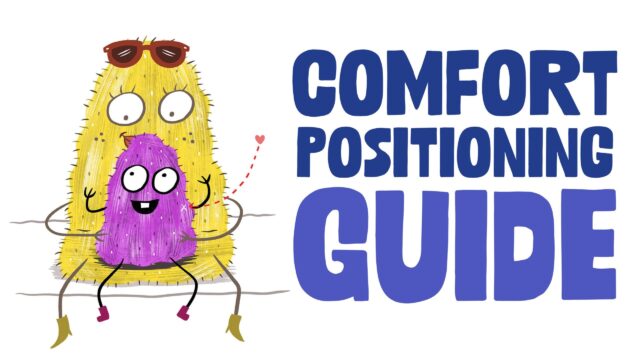
Downloads
Comfort Positioning Guide
Learn comfort positions that allow you to calm and comfort your child while keeping them safe!
What to say: “You are doing such a great job! I’m going to use my arm to help that arm stay nice and still so we can get this done quickly.” “It feels so good to hug you and snuggle.”
6. Never underestimate the power of good deep breaths
Slow, deep breathing is the ultimate hack of the nervous system and goes a long way to reduce both pain and anxiety. Slow your own breathing with intention, and your child with unconsciously start to mirror you and slow too. Using a pinwheel or bubbles (both of which require taking deep breaths) is great for both distraction and breathing. This video coaches kids to slow their breath and find a pace that works for this. Pro tip: Try to time the needle going in with the out-breath for the most impact.
7. Have something to look forward to after
We all need a reason to do something that is tough, and having a reward can help us refocus from a challenging moment to a much more pleasant future possibility. It also gives you something great to talk about that can provide some beautiful distraction.
What to say: “What kind of ice cream are we going to get after? Strawberry? Where should we do to get it?” By the time they are done answering, the poke is done!
8. Words make a big difference
The words we use to describe an experience determine how we feel about it and how we see it. Using your language differently can transform how your child feels about going to the doctor and getting a poke. Take a second to take in how different it feels to hear: “You have to go to the doctor and get a shot” versus, “We get to go to the doctor and get magic medicine that helps you stay healthy and strong.” The word “shot” can bring up big feelings and negative associations, so use words like “poke” or “injection.”
You get what you focus on, so make sure your language focuses on their ability to cope. It also needs to validate their feelings if they are anxious:
- “It’s normal to feel a little scared, but remember, we have so many ways to make it better. You did a great job of making a plan. Let’s go over all the great choices you made to help yourself feel better.”
- It’s important to validate how they feel, try “it makes sense you feel a little nervous” and refocus on the ways they have to manage the experience and feel more control.
Also, do yourself a BIG favor and never blame the “mean doctor or nurse” who is “making them” get the shot. This will stick in a kindergarten’s very literal mind, and it does two things: sets up what is basic health care as a punishment and sets up medical care providers as mean bad guys. Absolutely nothing good comes from that.

Words matter. The language we as parents, caregivers, and medical providers shapes the experience of kids going through medical procedures. This quick guide helps you make little changes that can make a big difference.
9. Choice is power
When we get to make choices, we feel more powerful and less anxious. While you aren’t giving that kindergartener a choice about getting the vaccine, other choices are appropriate and help kids feel empowered.
What to say: What arm or leg do you want to get the poke in? Who do you want to be with you? Do you want to use numbing cream? What toy do you want to bring? What video do you want to watch before and during the poke? What do you want for a reward after?
10. Calm yourself
The biggest predictor of your child’s distress during needle procedures is YOUR anxiety. This doesn’t make you a bad parent…it makes you a GOOD parent who has a great attachment to your kid! But let’s use that power for good. Stress is contagious, but so is calm. Now is the time to harness that inner zen, take those deep breaths, and realize that this game planning helps you walk in feeling prepped too.
If you are not a fan of needles yourself, you are not alone: one in four adults has significant needle anxiety. That means you know what it is like to feel nervous, have the urge to avoid health care, and make excuses not to go to the doctor. But this is one family tradition you don’t want to pass down, and now if your opportunity to create a different experience for your kid and for you. (You might also want to check out our Hack The Vax content to see this all in a more adult-like format!)
11. Play it out
As adults, we work things out with our words: kids work it out with their play. Practicing the skills and strategies helps them gain mastery and work through their anxiety. It’s incredibly helpful to have them “be the doctor” and give shots to their stuffies, dolls, grown-ups, etc. This can be done with an actual play doctor kit, but things like pen caps, crayons, and dull pencil work just as well. It’s the imagination that makes the difference. And just so you know, yes, it’s normal if they play it over and over again. Every time they play it through, they are getting themselves more and more prepared and get to practice their new skills.

What you say AFTER really matters
Really amazing research demonstrates that what we say to a child after the poke shapes that child’s memory of what happened and their expectations of the next time they need a poke. It’s actually really interesting and puts you again in a position to make this experience as positive as possible. So on that car ride home, focus on the positive, and go over anything and everything that went well. (“Great job using deep breaths! Nice job focusing on your video!”) Recap the strategies that worked well, and highlight them so the child pays attention and can take ownership of that positive coping.
Great tip: make a video after the poke and have the child talk to their future self about what worked for them. Dig it out whenever that next poke happens to remind your child of how they already know how to make themselves feel a whole lot better!
You’ve got this!
We believe in you. This situation is hard, but you’ve got what is takes and now a few tricks up your sleeve! Reach out if we can do anything else!

You May Also Be Interested In

Article
American Academy of Pediatrics: Taking Fear and Pain Out of Needles-For Your Child and You
Great article with practical tips from HealthChildren.org, the website of the American Academy of Pediatrics.
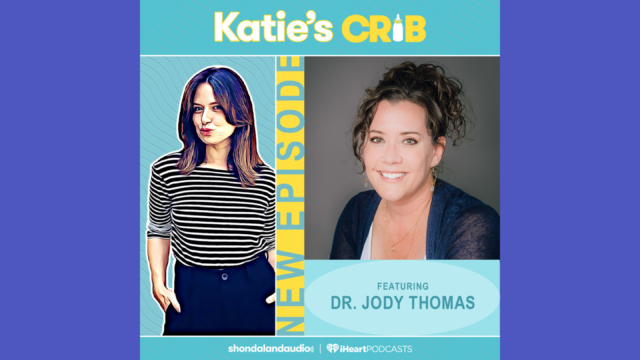
Podcast
Katie's Crib: Don't Fear The Freakout
Our CEO, Dr. Jody Thomas talks to the Goodie Nation podcast about her journey to starting the Meg Foundation, and the story behind the mission.
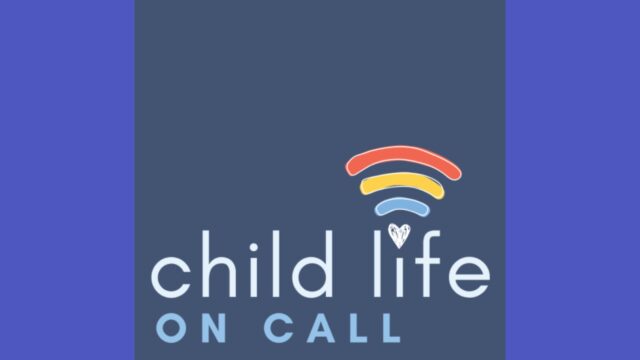
Podcast
Child Life on Call: Pediatric Pain with the Meg Foundation
Practical tips, expert on advice, and lot of experience in this interview with Dr. Jody Thomas and Child Life Specialist Jamie Gentille on the Child Life On Call podcast.

About the Author
Dr. Jody Thomas is a licensed clinical psychologist, and specialist in pediatric medical illness and trauma. A well-known expert in pediatric pain who teaches internationally on the subject, she is also a founder and the former Clinical Director of the Packard Pediatric Pain Rehabilitation Center at Stanford, and a former Assistant Professor at the Stanford University School of Medicine. Though she now lives in Denver, CO, she still serves as Adjunct Faculty for Stanford, providing supervision and teaching. As a consultant for the Lucile Packard Children’s Hospital at Stanford, she directs projects on the integration and innovation of pain management using tech-based intervention. Her passion for bringing together the power of medical science, technology and design to transform the way we think about kids and pain led her to her current focus but it’s her role as a mom of two that solidified her path in creating the Meg Foundation.
